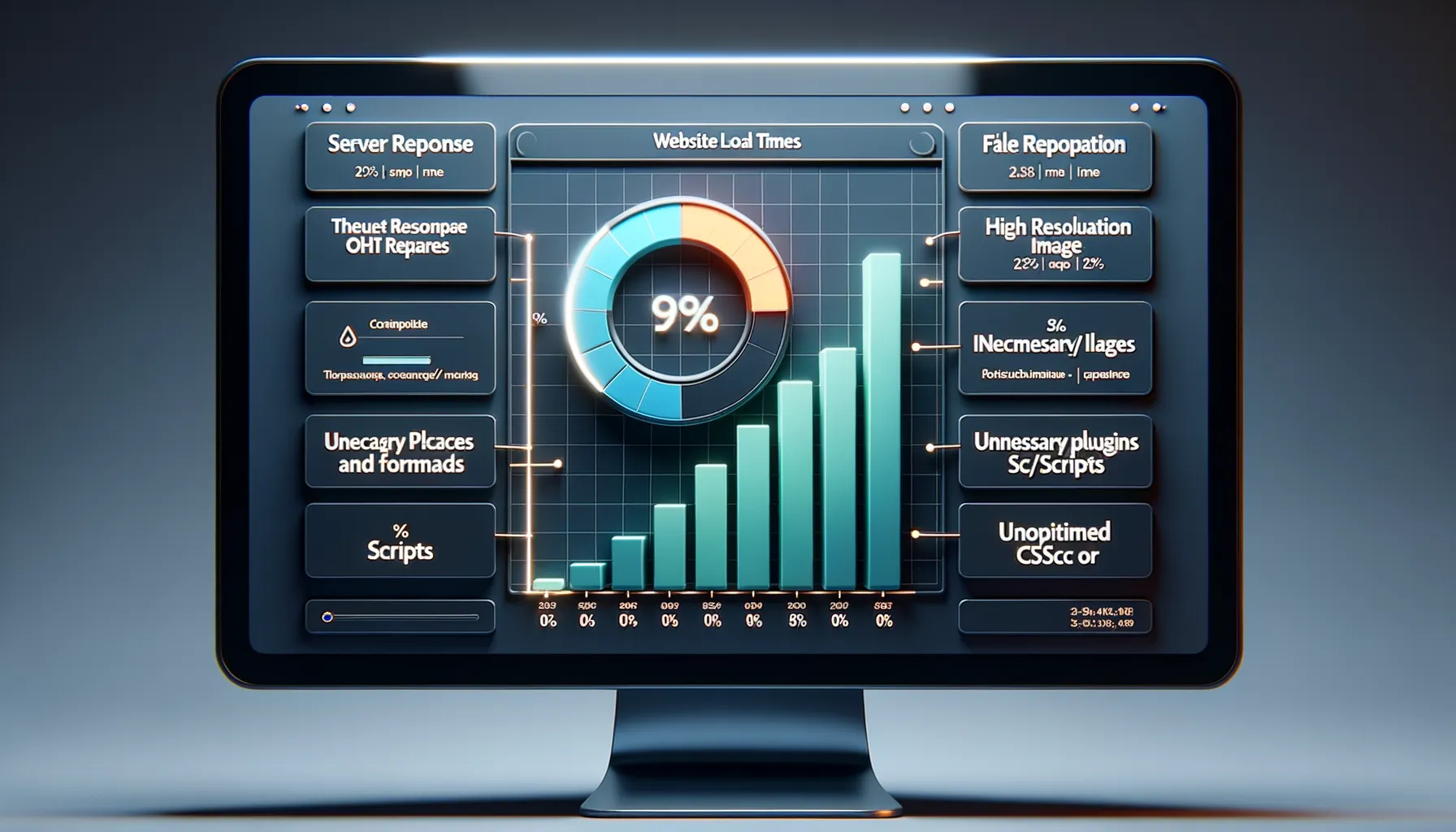Understanding the Relationship Between Website Speed and Sales Performance
Why Speed Makes or Breaks Your Online Sales
Imagine walking into a store, eyeing a rare coin you’ve wanted for years. But as you reach for it, the lights flicker, the cashier disappears, and you’re left tapping your fingers, waiting. Frustrating, right? That’s exactly what happens when a website loads slowly—it drives potential buyers straight out the digital door.
Studies show that users form an opinion about your website within milliseconds. A sluggish site screams “unreliable” louder than a blinking 404 error. And when seconds can mean the difference between ‘browse’ and ‘buy,’ every moment counts.
For coin collectors, decisions often hinge on impulse. Whether it’s snagging a historical piece or grabbing a limited-edition design, hesitation caused by buffering is sabotage. A lagging website doesn’t just lose sales; it erodes trust in your brand.
- 53% of mobile users abandon sites that take over 3 seconds to load.
- Even a delay of 100ms (a literal blink) can reduce conversion rates by 7%.
Speed isn’t just a technical detail—it’s the heartbeat of your online business, setting the tempo for customer satisfaction and skyrocketing sales.
Key Factors That Influence Website Load Times

The Silent Culprits Slowing Your Pages Down
Imagine your website as an elegant, streamlined train rushing toward its destination: your customers. But what if it starts pulling heavy baggage behind? Here’s where things get tricky. Several invisible culprits can turn that high-speed experience into a frustrating crawl.
- Unoptimized images: Oversized photos might look breathtaking, but they’re like forcing elephants onto the train—it’ll move, but painfully slow.
- Poorly written code: Messy, bloated code acts like tangled tracks. It confuses browsers and delays arrival at the final destination: loading your page.
- Too many HTTP requests: Think of these as constant ticket checks during the journey. Each request—whether for scripts or fonts—adds seconds to load time.
Why Hosting and Plugins Matter More Than You Think
Your hosting provider is almost like the engine of your train. A cheap, overloaded server? That’s a sputtering, outdated machine barely able to keep up. On top of this, overly enthusiastic use of plugins—like packing too many gadgets into the control room—can grind your website’s performance to a maddening halt.
And let’s not forget browser caching—or the lack of it. If you’re not allowing past passengers (your returning visitors) easy re-entry, you’re wasting time making them board from scratch. Trim the excess, upgrade the basics, and let your site speed ahead!
How Fast Loading Websites Enhance User Experience

Why Every Second Counts for Your Visitors
Picture this: a customer excitedly clicks on your website to browse your latest coin collection. But instead of your stunning coins, they’re met with… a spinning loading wheel. Frustrating, right? Imagine how they feel! Website speed is like the red carpet – roll it out smoothly, and users feel welcomed; make them wait, and they’re more likely to leave before even saying hello.
Fast-loading sites create an almost magical effect. They engage users in an instant, offering seamless navigation and keeping them hooked. Have you ever scrolled through a site that responds so quickly it feels like it’s reading your mind? That’s the golden standard. On the other hand, slow sites can feel like wading through molasses in January – sluggish and exasperating.
- Interactive elements, like search bars or filters, feel effortless.
- Images and videos load without buffering, drawing users in without distraction.
- Checkout flows operate like a dream, reducing cart abandonments.
Your users don’t just want speed; they expect it. In fact, a fast page can give the same satisfaction as successfully flipping a rare, gleaming coin – immediate, satisfying, and oh-so-delightful.
The Economic Benefits of Speed Optimization for Coin Sales

How Speed Unlocks Bigger Revenue Streams
Imagine you’re at a bustling coin fair. You spot a rare treasure but—oh no—the seller takes forever just to open their display case. Frustrating, right? A slow-loading website is the digital equivalent of that moment, and it’s costing businesses real money.
Speed optimization isn’t just a tech upgrade; it’s a revenue lifeline. When your site loads in a flash, here’s what happens:
- Conversion rates skyrocket: Research shows that even a one-second delay can slash conversions by up to 7%. Shave those seconds off, and watch those sales pour in.
- Cart abandonment plummets: Coins are often impulse buys. If your site lags, customers get cold feet and head elsewhere.
- Lower bounce rates: Visitors stay longer, explore more, and—more importantly—purchase more.
In dollar terms? A supercharged page could be the difference between selling a handful of coins or emptying your entire inventory. For example, an online collector saw a 20% surge in sales after compressing images and refining code. That’s the magic of speed optimization—it’s like polishing your rarest coin until it shines bright enough to dazzle buyers.
Tips and Strategies to Improve Website Load Times

Streamline Your Website’s Code for Lightning Speeds
If your website were a car, think of your code as the engine. A clunky, overloaded engine doesn’t just slow down—it leaves visitors stranded. To turbocharge your site:
- Minify CSS, JavaScript, and HTML: This trims unnecessary characters and whitespace from your code, giving it a leaner, faster feel.
- Eliminate render-blocking resources: Prioritize loading only what’s absolutely crucial above the fold, leaving less-essential files to load after the page appears.
Think of these steps as decluttering your house. The clearer your space (and code), the easier it is for people—and web browsers—to navigate.
Get Hosting That Can Keep Up
Let’s be honest: all hosting providers are not created equal. A shared hosting plan might save money, but when your coin customers flood your site during a sale, your bargain host might crash like an overloaded server on Black Friday.
Instead, invest in a hosting plan optimized for speed with features like CDNs (Content Delivery Networks) to serve your content from servers closer to your users. Pair that with solid-state drives (SSDs) for lightning-fast data retrieval. It’s more than an upgrade—it’s a game-changing advantage in a world obsessed with instant results.





